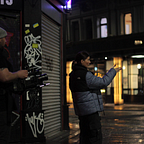The Silence of The Lambs: Still A Relevant and Intriguing Exploration of Gender Dynamics
‘Silence of the Lambs’, directed by Jonathan Demme and released in 1991, tells a gripping and disturbing story centred around the hunt for a serial killer. As a feminist film, it presents an intriguing exploration of gender dynamics and challenges traditional notions of femininity within the context of a male-dominated genre. Examining the film through the lens of feminist film theory reveals both its progressive aspects and areas where it falls short in its portrayal of women.
One of the film’s feminist strengths lies in its portrayal of Clarice Starling, brilliantly portrayed by Jodie Foster. Clarice is an intelligent, determined, and resourceful FBI trainee who is able to navigate a male-dominated field. Throughout the film, she faces various challenges and micro aggressions, yet remains resilient, refusing to let gender define her abilities or limit her potential. Clarice’s character challenges societal stereotypes that women are incapable or mentally inferior, and instead presents her as the hero of the story.
When discussing Clarice Starling, Jodie Foster is quoted as saying;
The scene that helped the most in placing Clarice as a character happens early in the film. Clarice enters an elevator, where she’s surrounded by other male FBI agents who tower over her. “She had this quietness,” Foster says. “There was almost a shame that she wasn’t bigger, that she wasn’t stronger, this person trying to overcome the failure of the body they were born in. I understood that was her strength. In some ways, she was just like the victims — another girl in another town. The fact that she could relate to those victims made her the hero.”
In addition to Clarice, there are other female characters in ‘Silence of the Lambs’ who exhibit agency and complexity. Dr. Hannibal Lecter’s former patient, Catherine Martin, portrayed by Brooke Smith, demonstrates strength and courage as she fights for her survival while held captive by the film’s antagonist. These female characters add depth and nuance to the narrative, showcasing the multidimensional aspects of women’s experiences.
The film’s exploration of power dynamics and the male gaze is another area where it aligns with feminist film theory. By positioning the male characters, such as Hannibal Lecter and Buffalo Bill, as dangerous and manipulative figures, ‘Silence of the Lambs’ challenges traditional power dynamics between men and women. It interrogates the male gaze, highlighting how the objectification and exploitation of women can lead to profound violence and psychological trauma.
However, it is important to critically analyse the film’s flaws when considering its feminist credentials. Some feminist critics argue that the film relies on misogynistic tropes and perpetuates harmful stereotypes. Buffalo Bill’s character, for instance, can be seen as reinforcing the idea that gender dysphoria is inherently associated with violence and psychopathy, which is a problematic portrayal. Additionally, the film’s violence against women is depicted in a sensationalised manner, potentially desensitising audiences and perpetuating harmful narratives.
Regarding the question of whether “Silence of the Lambs” still stands up as a feminist film today, it is essential to acknowledge the impact it had at the time of its release. In 1992, the film earned five Academy Awards, including Best Picture, Best Director, and Best Actress for Jodie Foster. It undeniably brought attention to female characters portrayed on screen and challenged traditional gender roles within the thriller genre. However, as conversations surrounding feminism have evolved, we can also recognise its limitations, particularly in its handling of certain themes and tropes.
‘Silence of the Lambs’ does remain an intriguing film to examine from a feminist film theory perspective. It presents a commendable portrayal of Clarice Starling as a complex and intelligent female protagonist. The film’s exploration of power dynamics and the male gaze also aligns with feminist principles. However, it is vital to critically engage with the film’s problematic elements, such as its handling of gender dysphoria and depiction of violence against women. Appreciating its historical significance while recognising its limitations gives a comprehensive understanding of “Silence of the Lambs” as an entry within the realm of feminist cinema.
